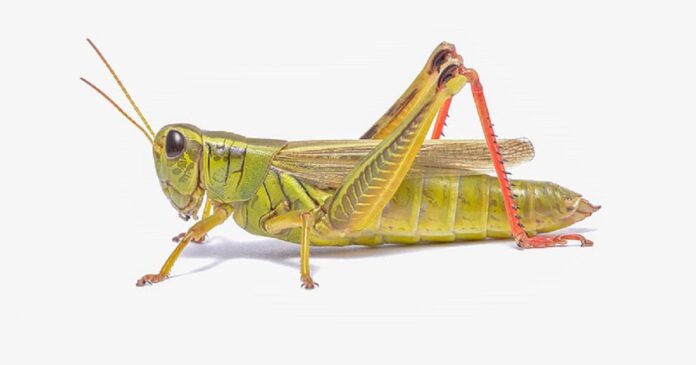Maize suffers from a number of insect pests that usually lead to a reduction in the yield of the plant. In many African countries, the average maize yield per hectare is very low. These insect pests of maize cause damage to the plant and cause stress to the plant. For maize, threatening organisms are stem borers, nematodes, bacteria, viruses, fungi, and weeds are some of the organisms that have a negative impact on the maize plant.
Read also: Comprehensive Guide to Commercial Maize Production Under No-till
Insect pests of maize
We look at seven major insect pests of maize, the damage they cause to the plant, and how they can be controlled or managed.
African maize stem borer (Busseola fusca)
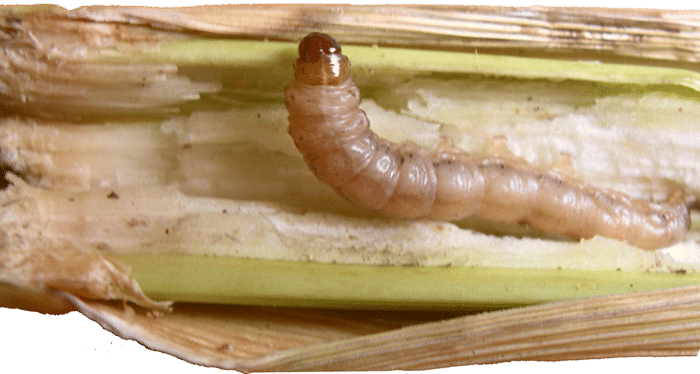
Damage caused
Larvae feed in whorls, cause “small windows” after the leaf grows out, and some leaves are even rolled up.
The larvae tunnel into the stem and inside the stem. Larvae can also tunnel into the ears, leading to direct yield losses. Feeding on kernels may also lead to the downgrading of the harvest.
Control
Destroy volunteers and alternative hosts to eliminate stem borer. Crop rotation with groundnut, sugarcane or cotton is very effective against stem-borer.
Grow resistant varieties
Apply Carbonfurn 3G at 3kg per acre.
Read also: Managing Crop Pests with Integrated Pest Management (IPM)
Aphids (Raphalosiphum maidis)
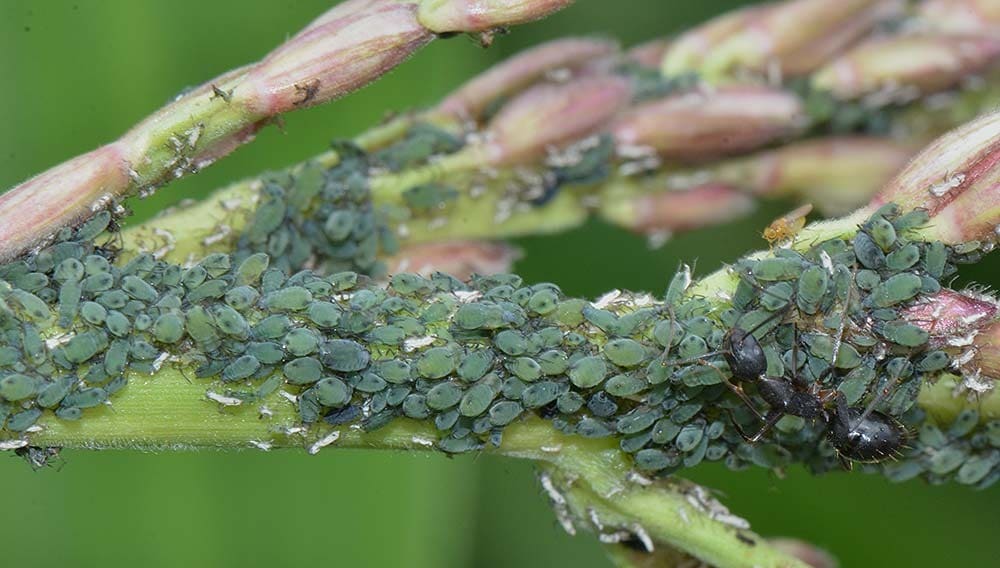
Damage caused
Both nymphs and adults suck the sap from the plant, especially the leaves. This turns the leaves yellow, and the plants remain stunted in the case of heavy infestation. Their injury causes the oozing of sap which crystallizes on evaporation, forming a sugary material called sugary disease.
Control
Coccinelids and chrysophiids suppress the population of nature.
However, you need base treatments with dimethoate 2 ml/l, monocrotophos 1.6 ml/l, or acephate 1 g/l.
Read also: 11 Highly Effective Pesticides to Fight Fall Armyworm
African pink stem borer (Sesamia calamistis)
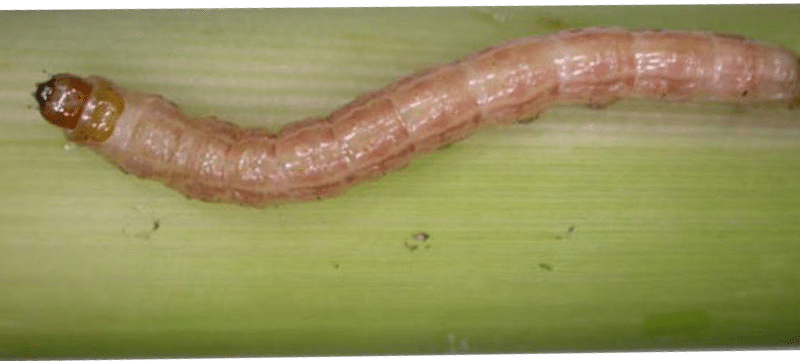
Damage caused
The larvae penetrate the stem shortly after they emerge from their eggs.
The larvae can tunnel into the stem, resulting in broken and drying stems, and eventual death of the growing point.
During ear filling, the majority of the larvae are in the ears.
Control
Pull out and destroy by burning dead hearts and affected plant parts.
Place granules in the central whorls.
Apply Carbofuran 3G, and Carbaryl 5G at 12 kg/ha in the leaf whorl three times at 20, 30 and 40 days the age of the crop.
Read also: Safety Precautions in Agrochemicals Handling and Usage
Fall armyworm (Spodoptera frugiperda)
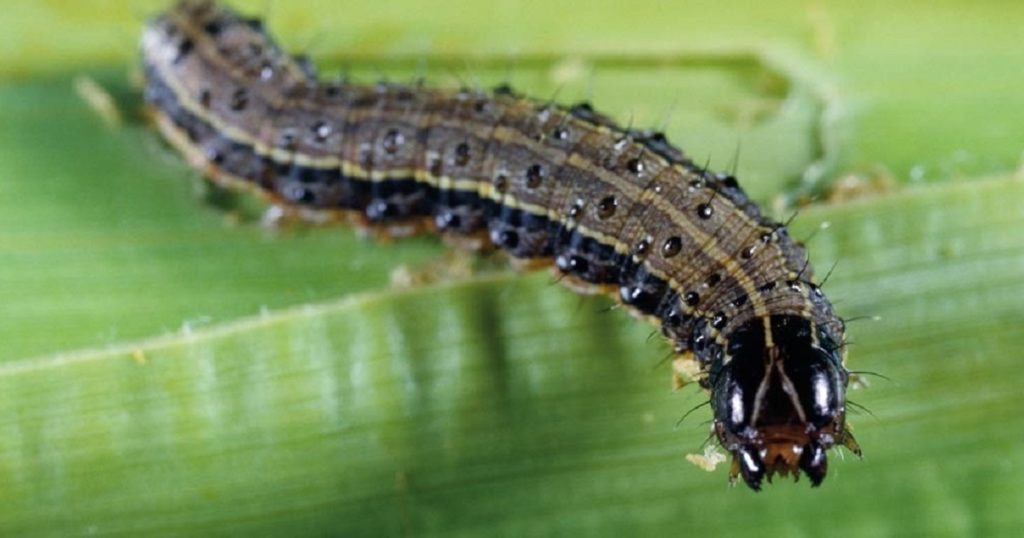
Damage caused
The symptoms of crop damage are very similar to those of other armyworm species and maize borer damage. Most plants recover from foliar feeding, but when grains are consumed by larvae, the damage is more severe. Yield losses of 15–55 per cent and even 100 per cent are reported.
Control
Read on the control of fall armyworm
Read also: How to control Nematodes without chemicals on farms
African bollworm (Helicoverpa armigera)
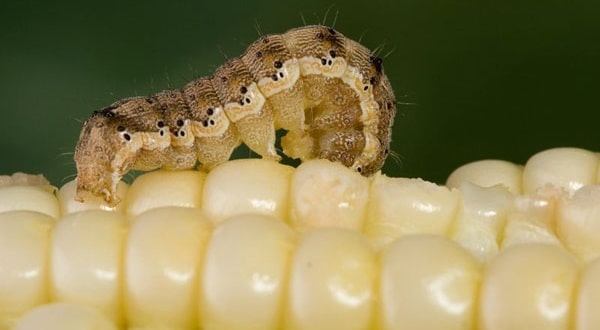
Damage caused
The larvae prefer ears but can also eat large holes through the whorl leaf roll. The presence of faecal granules near the feeding sites is an indication of the presence of this bollworm. Infection can prevent pollination because the larvae feed on the silks of young ears. The larvae can also open the tips of pollinated ears, leading to ear rot when rain enters the ear.
Control
Use thiodicarb, indoxacarb, and spinosad to break their resistance to conventional insecticides.
Apply one of the following on the 3rd and 18th day after panicle emergence; Carbaryl 10D at 25kg/ha, Malathion 5D at 25kg/ha or Phosalone 4D at 25kg/ha.
Read also: Is GMO the Solution to Sustainable and Productive Agriculture in Africa?
Grasshopper (Melanoplus spp.)

Damage caused
Nymphs and adults feed on corn in any plant growth stage.
The outer rows of corn are usually the first attacked, but as the grasshoppers reach the adult stage they move further into the field eating the leaves, silks and ear tips.
When grasshopper populations are high and the damage is severe, they may only leave the leaf mid-ribs, pruned ears, and barren stalks.
Control
Scraping field bunds and ploughings to destroy eggs, dusting carbaryl 10D or malathion 5D at 10kg/acre or foliar spraying with fenitrothion 2ml/l was found to be effective in the management of the grasshopper.
Read also: How to Scout and Identify Fall Armyworm in Maize Farms
Termites (Microtermes spp.)

Damaged caused
Insect pests of maize include termites. Termites occasionally cause partial or total defoliation of maize seedlings but are principally damaging to maturing or mature plants.
After about three months of plant growth, termites begin to attach to the main root system, prop roots and stems and eventually pack the stems with soil and cover them with tunnels made of thin sheets of soil.
Control
Locate the termitarium, dig out the queen, and destroy it.
Fumigate Ant Hill with carbon disulphide or chloroform mixture.
Destroy crop residue, which forms a source of infestation.
Treat seed with chlorpyriphos at 6ml/kg of seed.
Apply chlorpyriphos 50 EC to the soil at 10ml/l as a soil drench at sowing time in termite-prone soils.
Integrated Pest Management (IPM) in Maize
- Deep ploughing followed by fallow helps in exposing the resting stage of the pest.
- Inter-cropping with legumes reduces borer incidence. Some good examples are Maize-soybean, Maize-Cowpea/Maize-Green gram.
- The use of well-decomposed farmyard manure reduces termite attacks. Also, balanced use of fertilizer (NPK 120:60:40) kg/ha and supplements of micronutrients.
- Removal of dead hearts will help to reduce second-generation infestation of insect pests of maize.
- The use of bird scarer prevents seed damage.
References:
Maize In Africa – International Plant Biotechnology Outreach.
Pests of maize – Ch. Naga Satyasri
